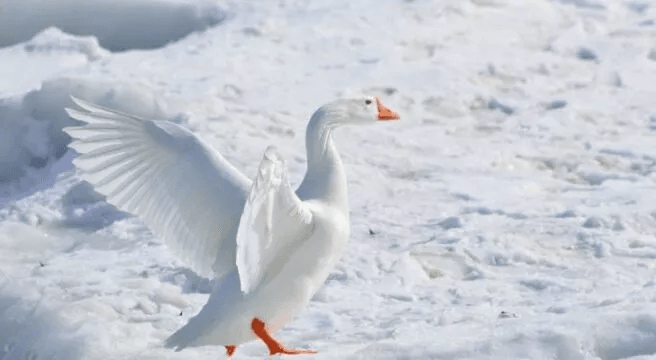
9 Fascinating Facts About Geese You Should Know
- Animal
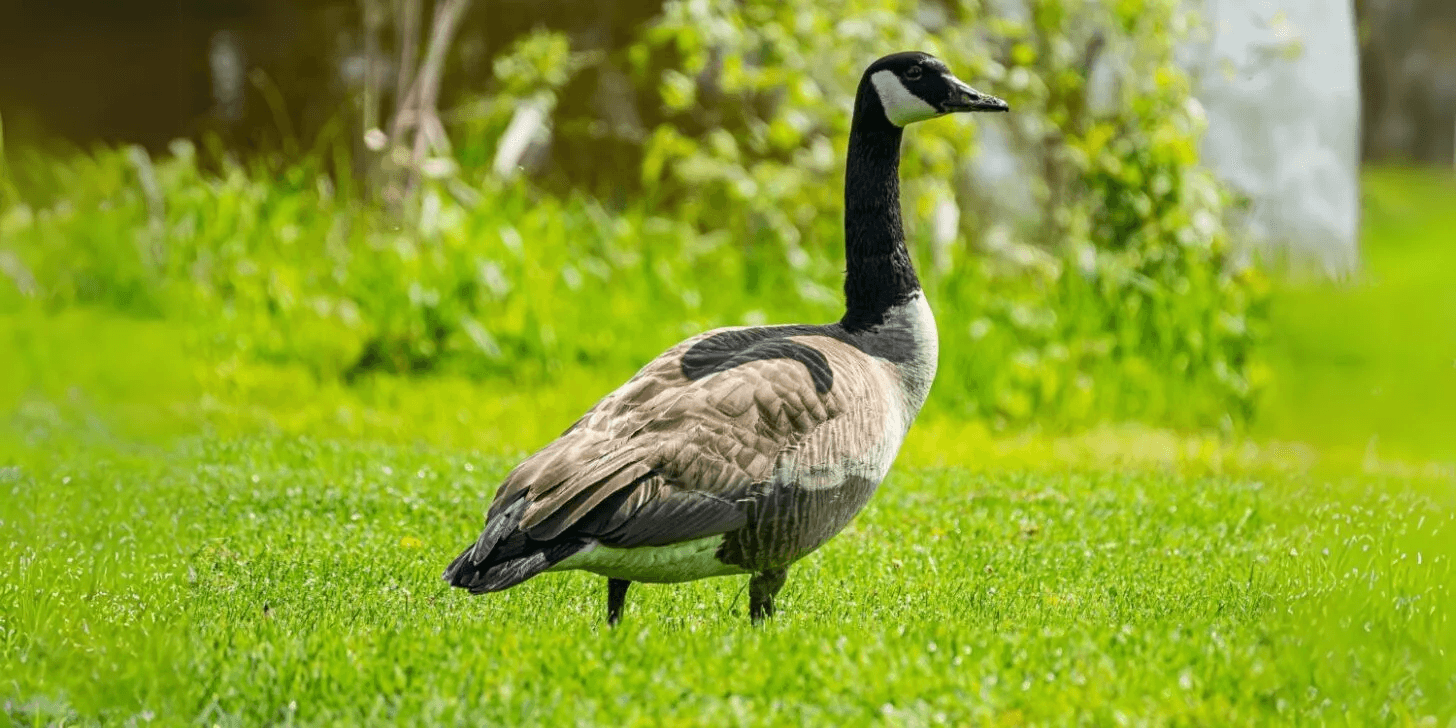
Geese’s aggressive nature makes them excellent protectors, but that’s just one of the many roles they play in nature and history.
From ancient guardians and messengers to natural lawnmowers and cultural symbols, geese have been integral to our lives in surprising and significant ways.
Take a gander at these 15 remarkable facts to discover how these feathered friends have made their mark on the world.
1. Geese are loyal to their partners and friends.
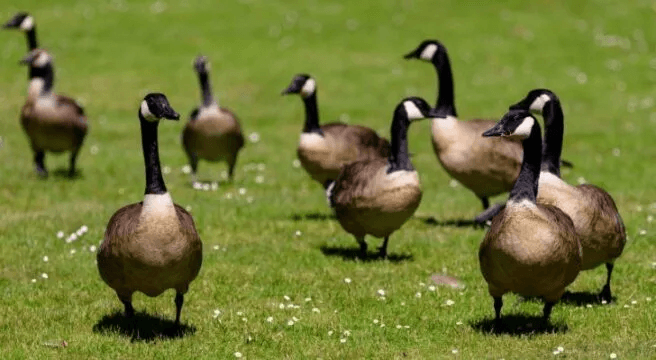
Geese are known for partnering up for the long haul, often mating for life. This loyalty isn’t just romantic; it’s practical, too, as it helps them raise their young more effectively.
When they lose their partner, they also show signs of mourning.
This doesn’t mean they are entirely monogamous, though. One study states that up to 40% of the chicks a male goose helps to raise aren’t his offspring.
2. A very brave goose was once enlisted in the British army.
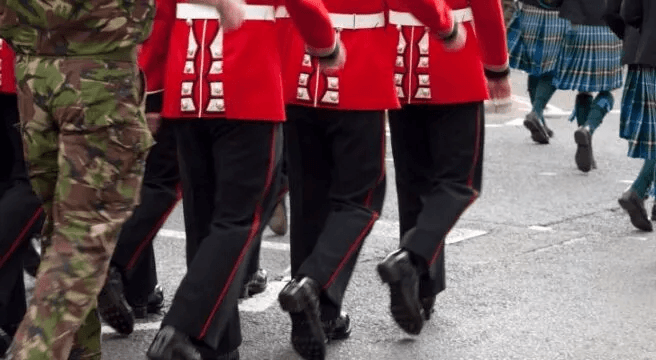
Jacob the Goose served in the 2nd Battalion Coldstream Guards of the British Army. He helped patrol regularly with the men and alerted officers to enemies sneaking up on the sentry.
While deployed in Canada, Jacob the Goose received a gold gorget and a good conduct ring for his heroic actions defending against the French rebels.
On their return to London in 1842, Jacob continued his duties at the regiment’s Portman Street Barracks in London.
3. Geese are expert navigators.
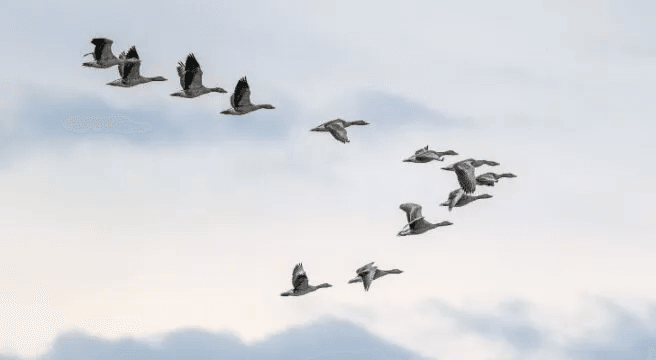
Geese are well known for their long migratory journeys.
Researchers believe they use landmarks, the Sun, stars, and Earth’s magnetic field to navigate, with the help of magnetite in their beaks.
Canada geese have been known to fly from Canada as far down as Northern Mexico, often returning to the exact same places every year.
4. Geese communicate in many different ways.
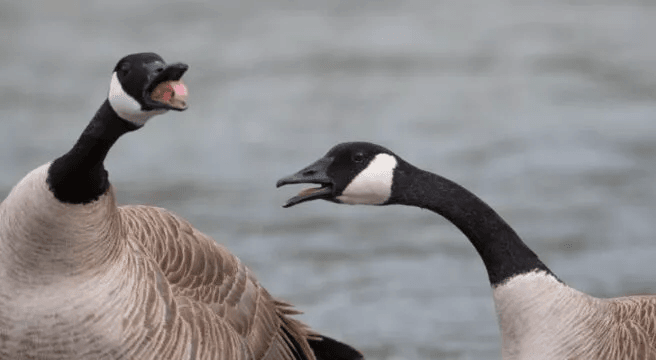
These birds are pretty talkative, using a variety of honks, hisses, and cackles to communicate everything from warnings to greetings within their flock.
Of course, geese also have mating calls, and the male makes long, rhythmic chants to attract a mate.
Geese often make loud honks when they see their partner again after being away.
Body language is also used during courtship displays and to indicate feelings of aggression. If you see a goose extending its neck and flapping its wings at you, back away slowly.
5. Prehistoric geese were as big as cows!
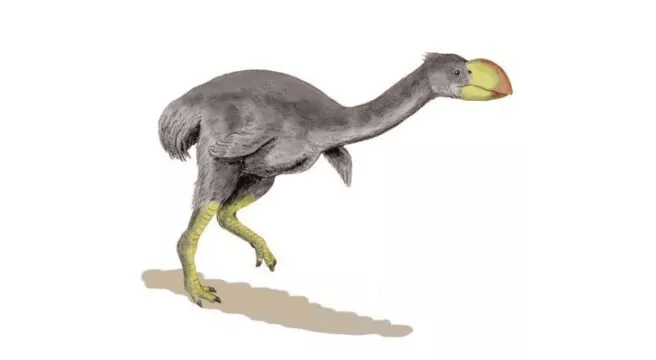
If you thought the geese in your local park were scary, think again.
These prehistoric geese grew to 9.8 feet (3 meters) tall and lived in modern-day Australia between 24 and 5 million years ago, during the Miocene period.
The Latin name for this giant bird is Dromornis stirtoni. Weighing in at a maximum of 1,322 lb (600 kg), it wasn’t just the largest goose ever but also one of the largest birds!
This and other factors found in the bone structure show that this was probably a flightless bird.
6. AI has been trained to recognize goose faces.
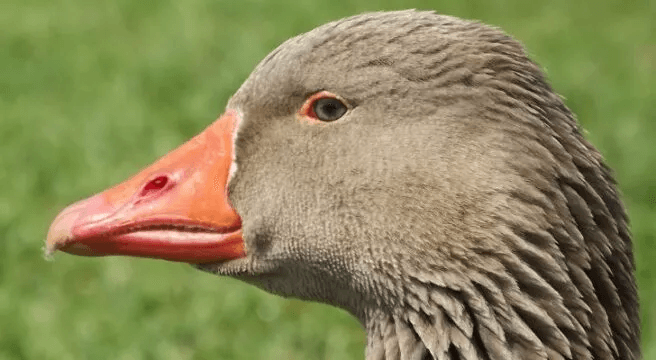
A team of researchers at the Konrad Lorenz Research Center in Vienna taught an AI program to recognize goose faces. The team and its director, Sonia Kleindorfer, were able to do this at 97% accuracy!
With this technology, they’re able to track the social structures within flocks of geese more clearly.
Kleindorfer said of geese’s social lives: “Geese have such drama. There are archrivals, jealousy, and retribution.”
7. Geese are able to withstand extreme cold.

Although geese are known for flying to warmer weather, they are very capable of surviving in cold temperatures.
Their outer layer of feathers has an oily coating, ensuring they stay dry, while their lower fluffy coat, known as goose down, is perfect insulation.
Their veins and arteries are also positioned so that as warm blood pumps to their extremities, it warms up the blood on its way back to the heart.
This helps keep their feet warm as they walk and swim through cold wetlands.
8. Geese play a role in folklore and mythology worldwide.
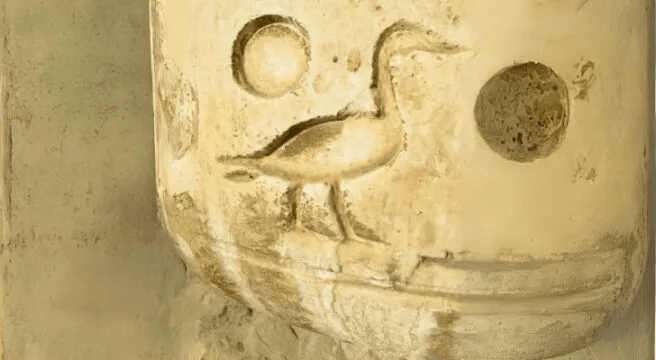
Geese are often seen as symbols of fertility, creation, and even loyalty.
Ancient Egyptians believed they represented the human soul of the deceased and were messengers between the heavens and Earth.
According to legend, at the beginning of time, a goose called “the Great Honker” laid the golden egg that is the Sun.
In Hindu mythology, the god Brahma is often depicted riding a goose or hamsa. The Greeks, Celtics, and Native Americans also joined in!
9. High-flying geese are a nightmare for commercial planes.

During migration, a bar-headed goose was recorded flying at altitudes of up to 7,290 m (23,920 ft). Bar-headed geese fly over the Himalayas into warmer regions in India during winter.
At these heights, they have less than half the oxygen than at sea level, where, without supplemental oxygen, humans wouldn’t survive.
It’s not just the bar-headed goose that flies so high, though, with many geese being a huge problem for planes.
Canadian geese, for example, famously caused the crash of US Airway Flight 1549 into the Hudson River on January 15, 2009.





